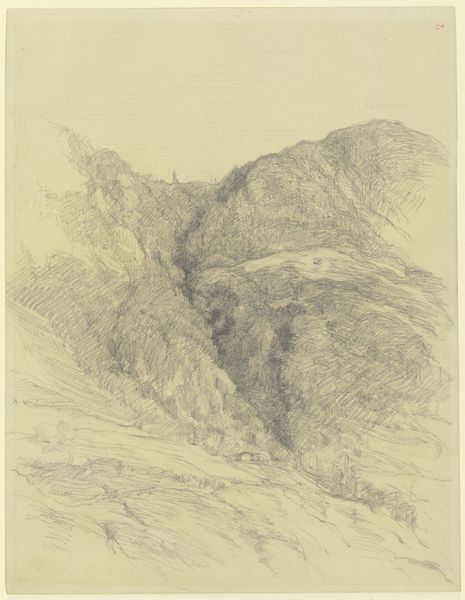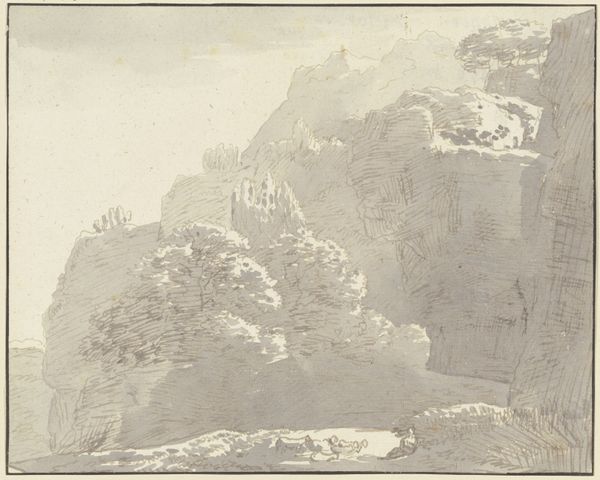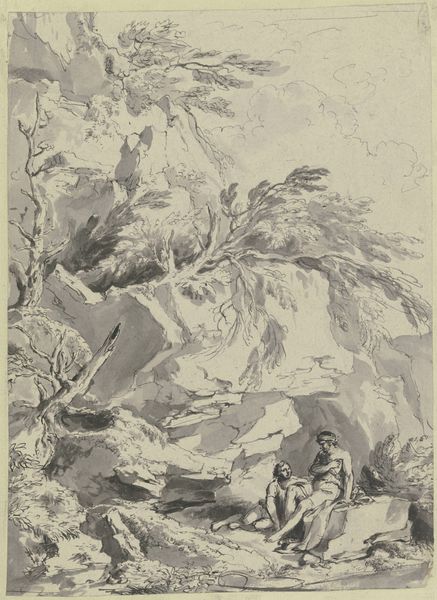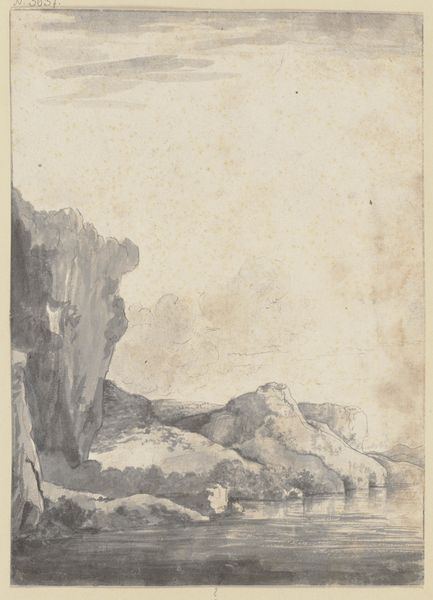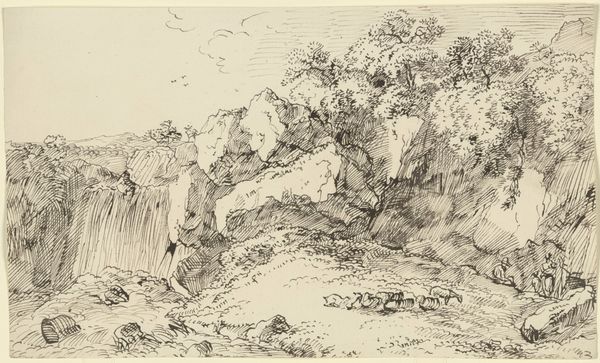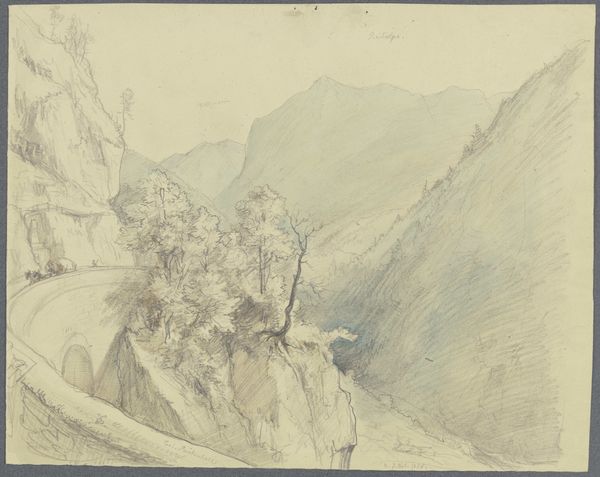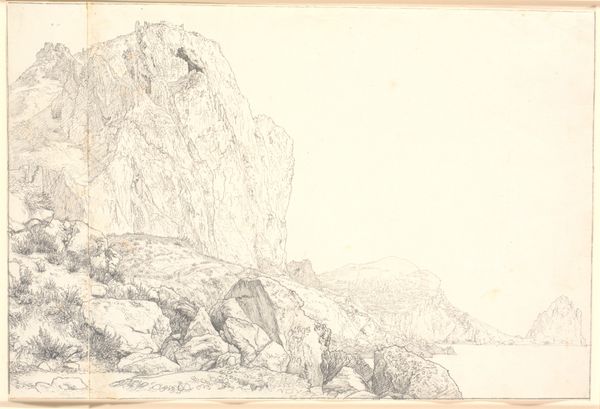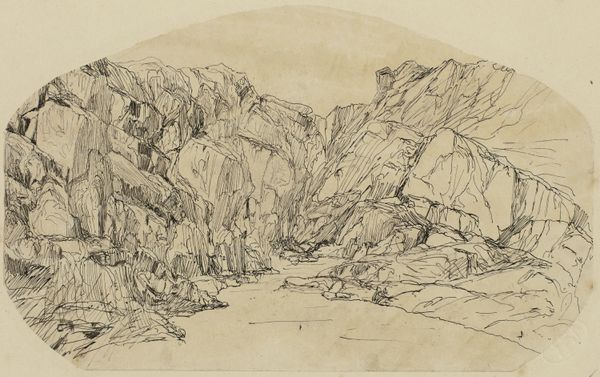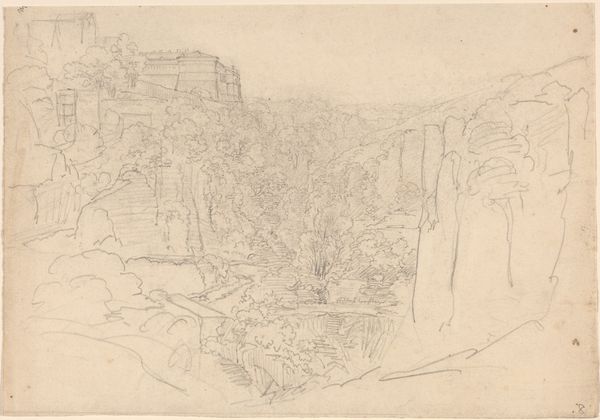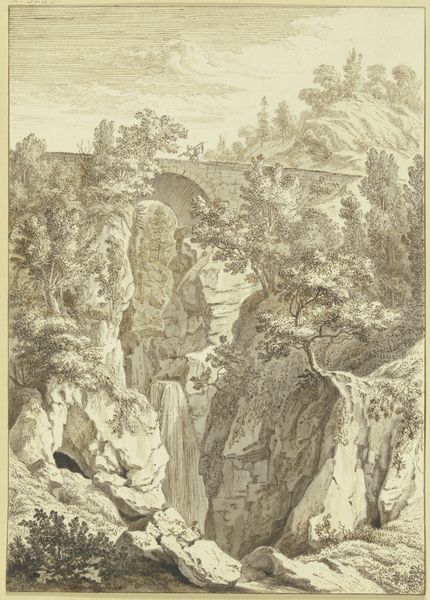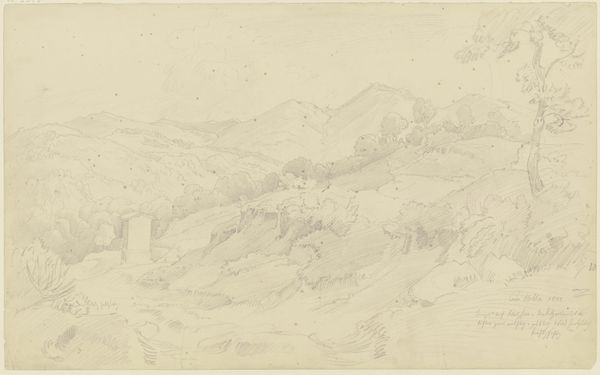
Copyright: Public Domain
Karl Friedrich Harveng created this landscape drawing, "Castle in the Mountains," in 1868. The image taps into a popular romantic fascination with picturesque ruins, common among artists and patrons of the era. Looking closer, the cultural references become clear. Consider the German context in which it was produced. The rugged landscape, complete with a medieval castle, is rendered to evoke the spirit of the *wanderer*, a stock figure of Romanticism that represented man’s spiritual connection to nature and the past. The castle ruin speaks to Germany's own fragmented political history, and the search for a unified national identity at the time. The artist is signaling the unique character of the German landscape. The Städel Museum, like other art institutions, shapes the way we view and understand such artworks. Through careful research of the artist and the cultural context, we can better understand the image's place in the cultural landscape of 19th-century Germany.
Comments
No comments
Be the first to comment and join the conversation on the ultimate creative platform.
